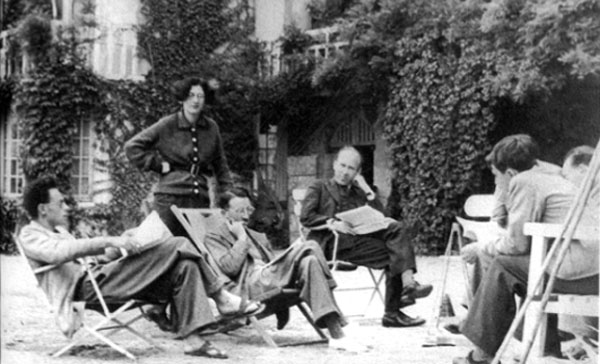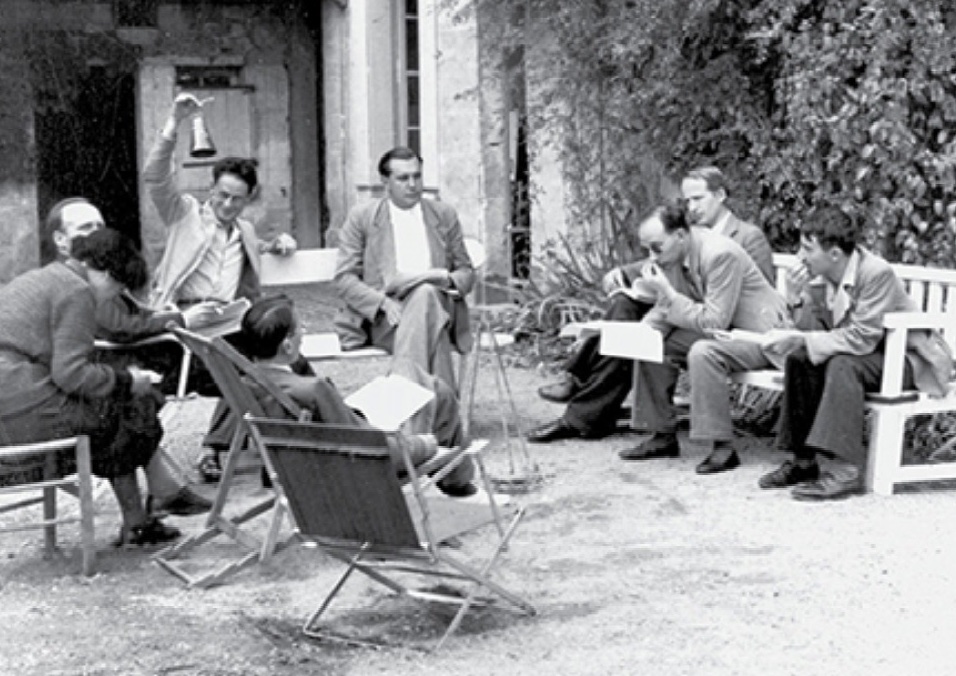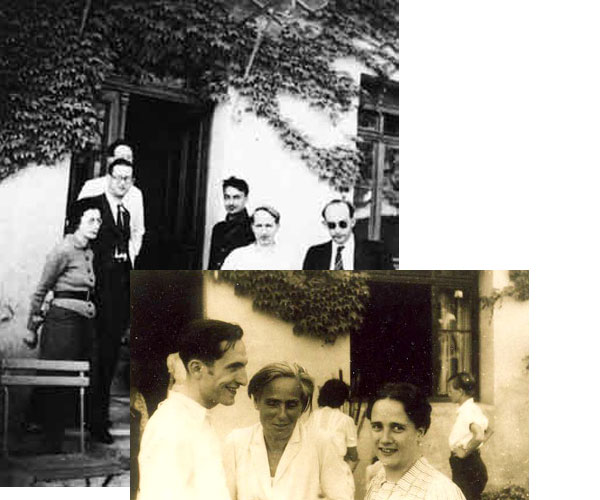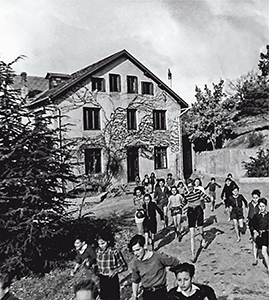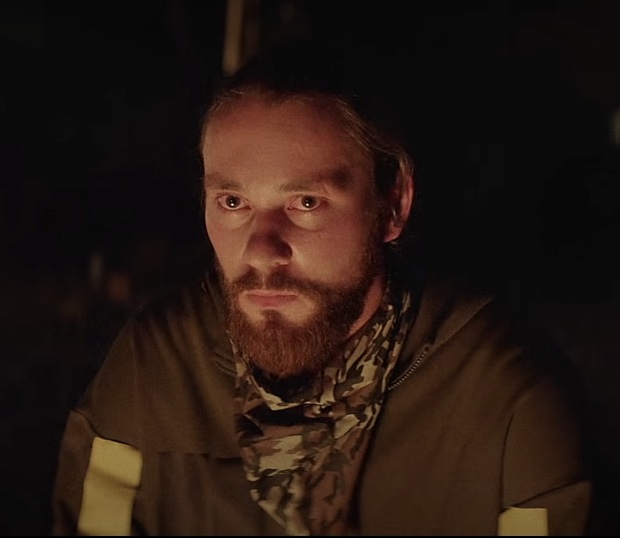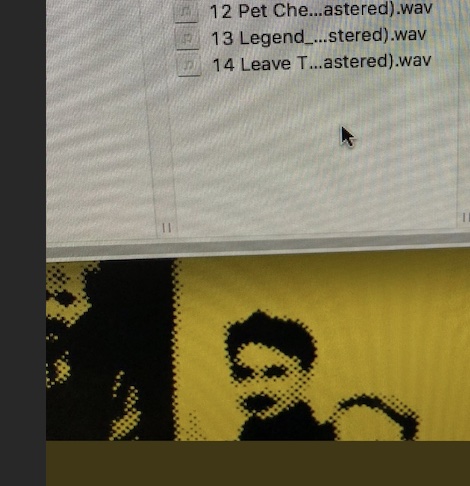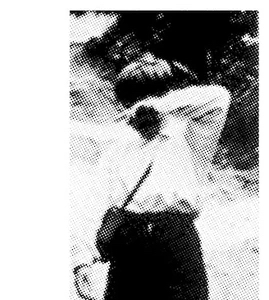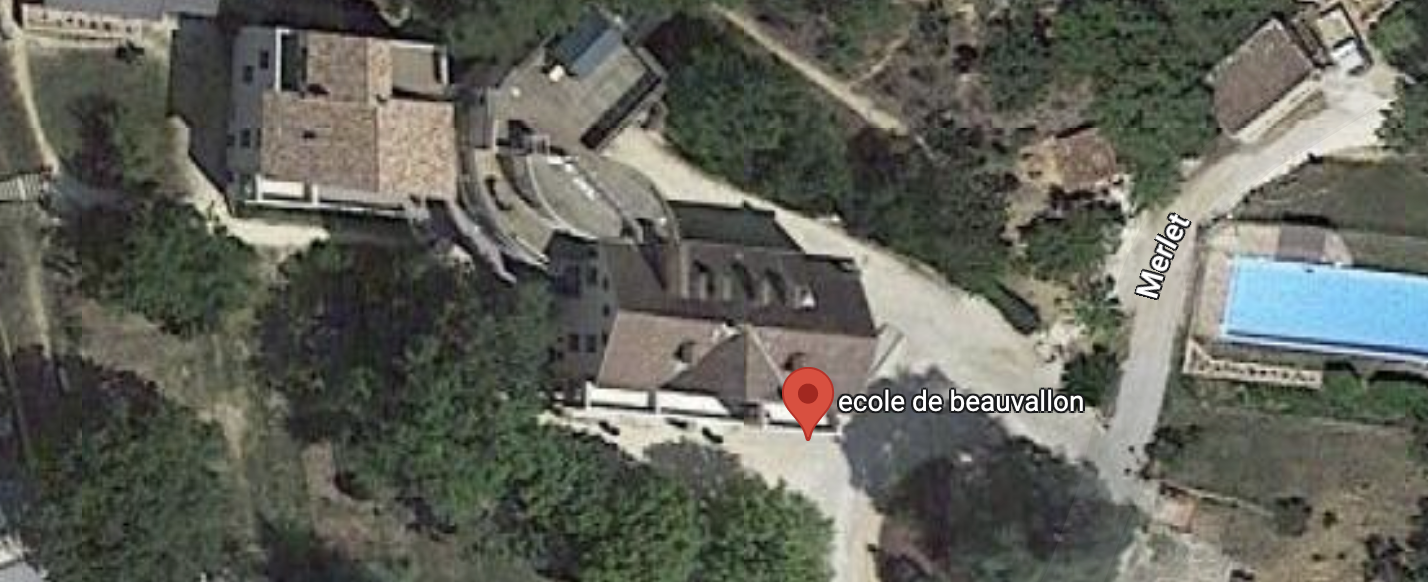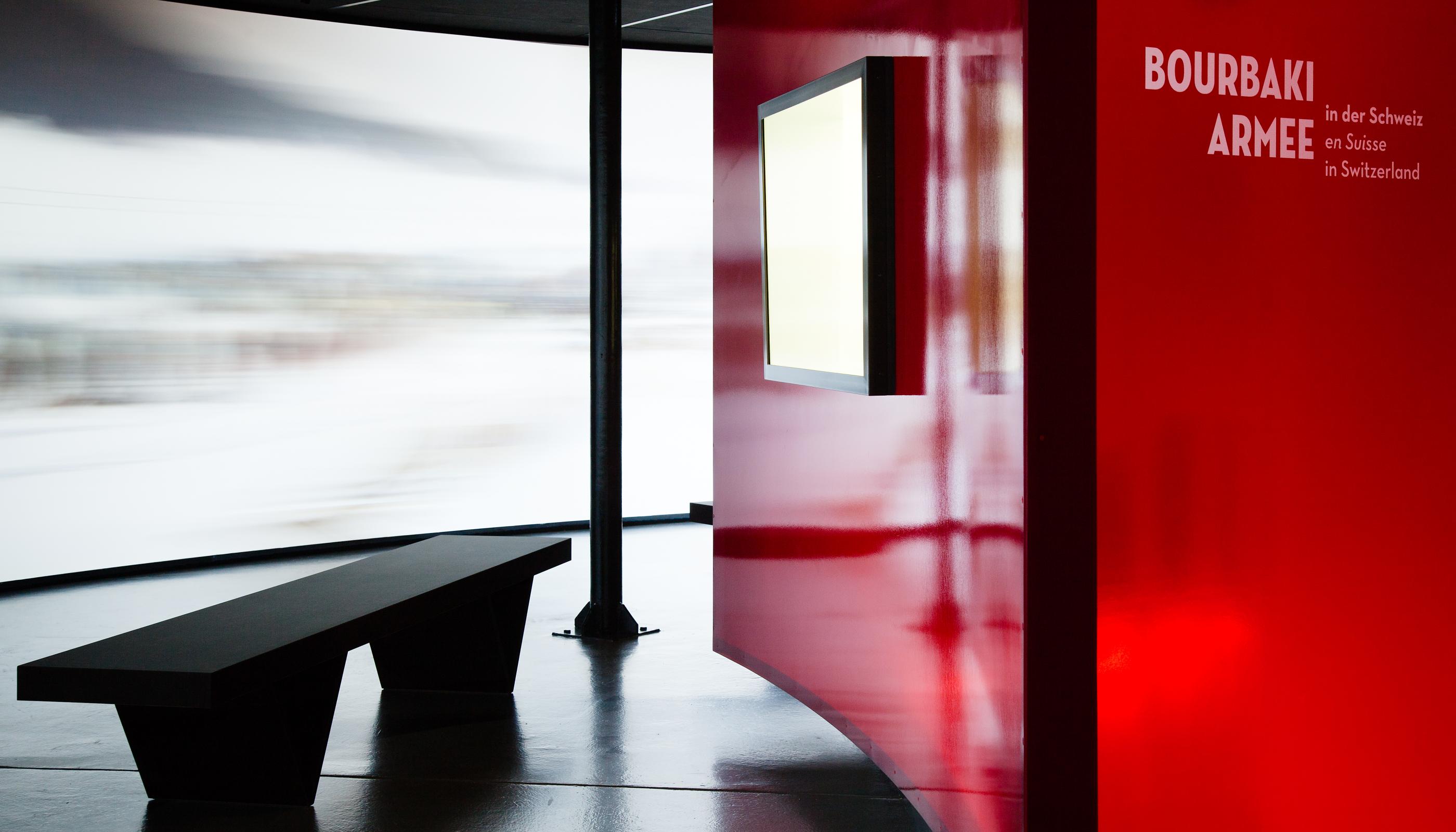In this series I’m trying to figure out why the Bourbaki-group was an inspiration for the storyline of Trench, the fifth studio album by American musical duo Twenty One Pilots (or TØP).
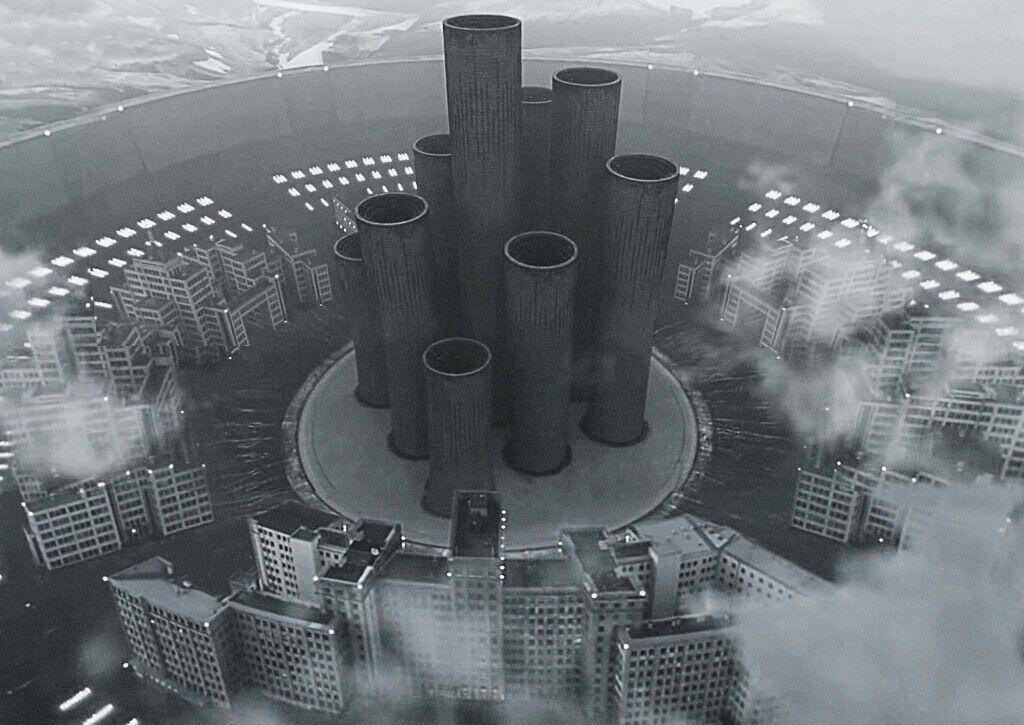
Trench-lore centers around the city of Dema, ruled by nine Bishops enforcing Vialism (a fake religion asking people to take their own lives to glorify Dema).
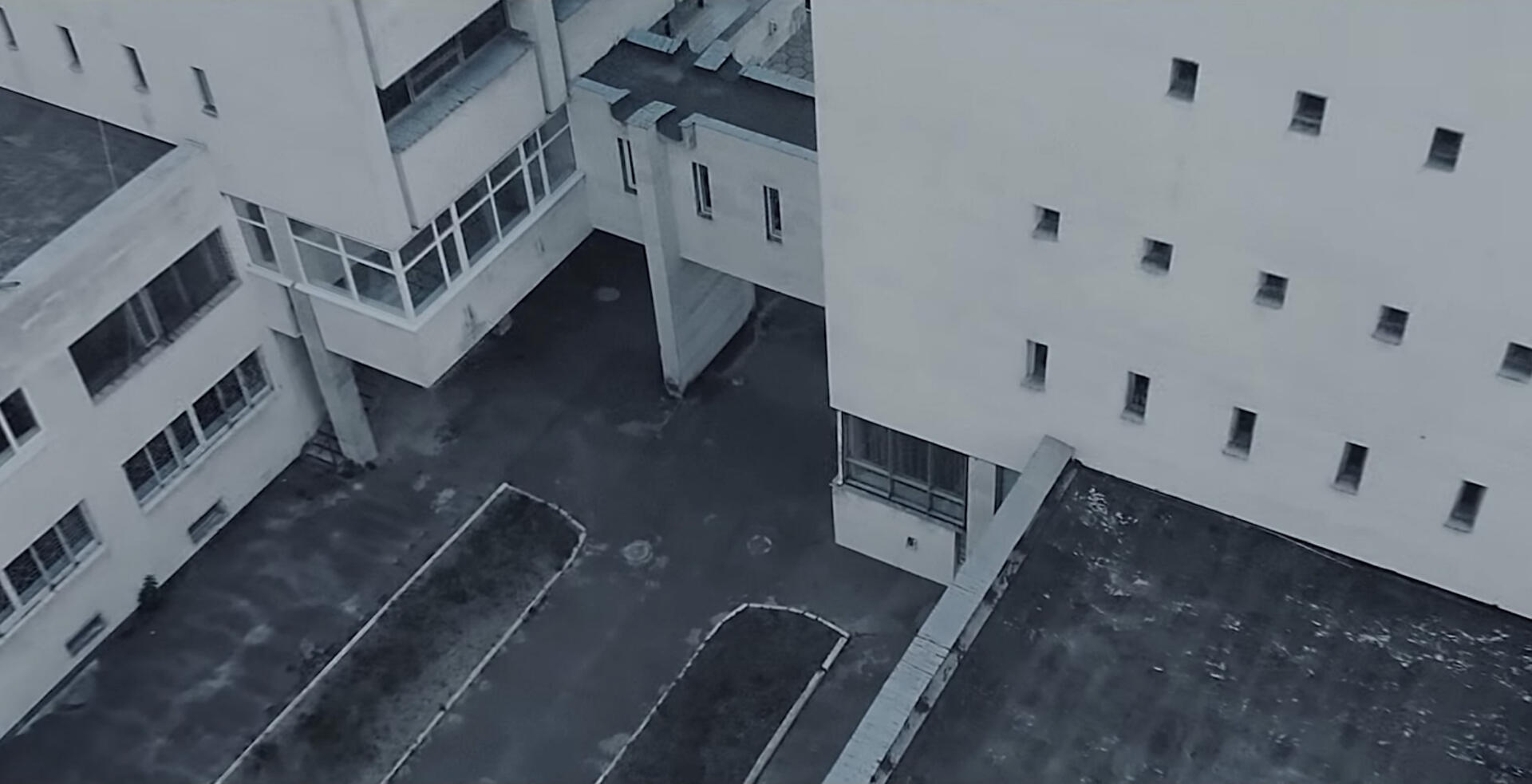
It is an unfortunate coincidence that the city of Dema in the movie-clip of Nico and the Niners was inspired, and shot in Kyiv and Charkiv, Ukraine (the clip is from 2018).
I’ve just found out that Dema is situated in my country… (NATN was made in Kyiv and Charkiv, Ukraine)
by u/Sasha0503 in twentyonepilots
Here’s the corresponding ‘beyond the movie’-clip, from which we learn (or rather are told) that the movie’s ‘city of Dema’ was shot in ‘the former Ukranian high-school’ of Josh Dun (he even calls it his ‘Alma Mater’), all in quotes because I don’t buy any of it, but take it as a desperate hint to identify Dema.
In the Trench movie-clips, Josh Dun is always cast as a Bandito, and last time we saw that also the Bourbaki-gang is likely to be close to the Banditos. Dema is supposed to be the Alma Mater of (at least some of) the Banditos. Hold that thought.
As for the connection between the City of Dema and the Bourbaki-group, we only have one piece of solid information:

That the Bourbaki-group named themselves after Nico=Nicolas Bourbaki clearly resonates with Twenty Øne Pilots who got their name from the 1947 play ‘All My Sons’ by American playwright Arthur Miller.
But the crucial info is: “The story of Dema happened before them”, so the story of Dema with the Bishops and Vialism happened before the Bourbaki-group. An extra piece of evidence that there is no way the Bourbaki-group are the nine Bishops of Dema.
So, what happened before the Bourbaki-group?
Mathematically, their direct predecessors were David Hilbert, Emil Artin, Emmy Noether and her boys, in short German mathematicians from the 1920’s and early 1930’s.
Several of the Bourbaki founding members studied in Germany (Weil in Gottingen in 1927, Chevalley in Hamburg in 1931 and Marburg in 1932, and Ehresmann in Gottingen in 1930).
They were inspired by Hilbert’s program (We must know, we will know), and set out to introduce the German style of writing and doing mathematics in France.
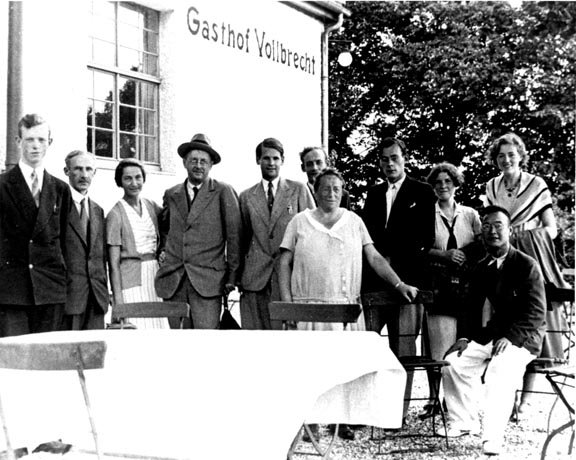
So, a first candidate (also given the Bauhaus-like architecture of Dema) might be ‘German Mathematicians’, or in German, DEutscher MAthematiker = DEMA.
But one can hardly argue that there was a self-destructive attitude (like Vialism) present among that group, quite the opposite.
Still, one can ask why German mathematics was that strong in the 1920’s, compared to the French. France and Germany took different approaches with their intelligentsia during WW1: while Germany protected its young students and scientists, France instead committed them to the front, owing to the French culture of egalitarianism.
Remember that the album is called Trench, and the dirtiest trench-war in all of human history was WW1. Hold that thought.
But, how does this help us in identifying Dema.
A few months before the release of Trench, a website was launched containing letters (from a character named Clancy) and some photos (including part of a photo of Andre Weil). That website’s URL still is dmaorg.info.
On the rear of the boat in the movie-clip Saturday, we see ‘030904 DMA ORG’ (the 030904 is simplistic code for CID, believed to mean ‘Clancy Is Dead’).
Compare this to the official email address of the ‘Association des collaborateurs de Nicolas Bourbaki’ which is: bourbaki@dma.ens.fr.
Here, ‘dma’ stands for ‘Département de mathématiques et applications’, one of the fifteen departments of the ENS, the Ecole Normal Superieure in Paris, Rue d’Ulm.
Remember the inspirational, photoshopped photo of the Bourbaki 1938 congress in Dieulefit/Deauvallon:

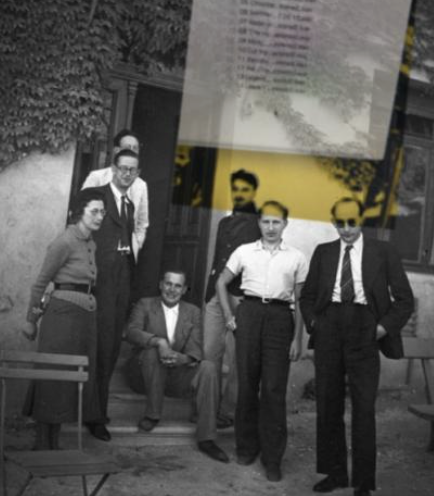
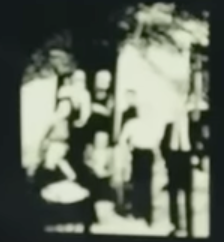
All seven people in the original picture are ‘normaliens’, that is, their ‘Alma Mater’ is the Ecole Normale Superieure’. All but Simone Weil graduated from the DEpartement de MAthematiques=DEMA, as DMA was called then.
Whence the hypothesis: Bourbaki’s Dema = ENS before and during WW1

It is a conglomerate of buildings and its central courtyard forms a kind of secular cloister around its basin. This space is called “la Cour aux Ernests” in reference to a former director, Ernest Bersot. He had placed red (!) fish (=the Ernests in ENS-slang) in the basin, which have become one of the symbols of the school.
More important to us is that the pond of the Ernests is reached by crossing the “aquarium”, where the ENS war memorial is located, commemorating the 239 (former) ENS-students killed in WW1 on a tatal of about 1400 of them drafted…
From the Wikipedia-page on Nicolas Bourbaki:
“The deaths of ENS students resulted in a lost generation in the French mathematical community; the estimated proportion of ENS mathematics students (and French students generally) who died in the war ranges from one-quarter to one-half, depending on the intervals of time (c. 1900–1918, especially 1910–1916) and populations considered.”
A chilling, and very detailed account of the circumstances that lead to the deaths of about 50% of ENS-student from the period 1910-1913 can be found in the paper Pourquoi les normaliens sont-ils morts en masse en 1914-1918 ? Une explication structurale (Why the normaliens suffered mass-death in 1914-18, a structural explanation) by Nicolas (!) Mariot. Here’s the abstract:
“The École Normale Supérieure d’Ulm is always mentioned when historians summarize the ravages of World War I in France: the institution embodies the commitment of intellectuals at the front. The article offers an interpretation of mortality rates of the School which allows to understand why it is primarily students during schooling (Classes 1910-1913) that are heavily affected. Rather than basing the interpretation on the single assumption of sacrifice, it puts forward arguments pertaining to the history of the school in the immediate pre-war, including the institution of military training after the reform service in 1905, competition with the École Polytechnique to retain the best scientific students, and finally the forced commitment of the ENS students in the infantry.”
Crucial in this is the role of Ernest Lavisse who was the director of the ENS from 1903 till 1919.

Before, normaliens had to serve 12 months in the army, just like all other students. In 1905 the law changed, and under Lavisse’s influence ENS-students were given a heavy military training. From the paper:
“From now on, normalien students, like those of other major military schools, are subject to a two-year service: a first year before their actual entry into rue d’Ulm, which they had to perform in an infantry regiment; a second on leaving, which they can finish as a reserve second lieutenant, but always in the infantry, if they pass the tests. And there is more: because between these two years, the students also follow a fairly heavy military preparation, including theoretical and physical exercises, even on Sundays, organised by two officers seconded full-time for this mission within the walls of the School.”
He also instilled in the ENS-student a radical sense of patriotism, and was a fervent propagandist for l’Union sacrée. From the paper:
“Intellectual mobilisation crystallised in the figures of Lavisse and Durkheim via their famous Letters to all French people distributed in millions of copies across the country. In the fall of 1914, the two founded and took control, respectively as director and secretary of the Committee for Studies and Documents on the War, a propaganda organ for the country’s executives.
Alongside them, eight of the nine other members of the Committee are former students of the School who have become professors at the Sorbonne (Charles Andler, Charles Seignobos, Émile Boutroux, Ernest Denis, Gustave Lanson) or at the Collège de France (Joseph Bédier, Henri Bergson, Jacques Hadamard), without even mentioning the role of editorial secretary held by Lucien Herr, legendary counterpart of Paul Dupuy at the Rue d’Ulm library.”
I would have liked that there were only nine members of the committee, but there were eleven of them…
Anyway, Lavisse and his eight professors created an extremely patriotic environment at the ENS during WW1, encouraging students to go to (the) Trench(es) and give their life for France and the glory of the Ecole. The ENS-monument is the equivalent of the Neon Gravestones in Dema-lore.
Did you spot it too? LAVIsse is almost a perfect anagram for VIALism.
Concluding, the best theory I can come up with in order to include the Bourbaki-group in Dema-lore is that their Dema is the ENS in WW1 and preceding years, and that Vialism is the regime installed by Lavisse and the other members from the committee.
In this series:
- Bourbaki and TØP : East is up
- Bourbaki = Bishops or Banditos?
- Where’s Bourbaki’s Dema?
- Weil photos used in Dema-lore
- Dema2Trench, AND REpeat
- TØP PhotoShop mysteries
- 9 Bourbaki founding members, really?
- Bourbaki and Dema, two remarks
- Clancy and Nancago

